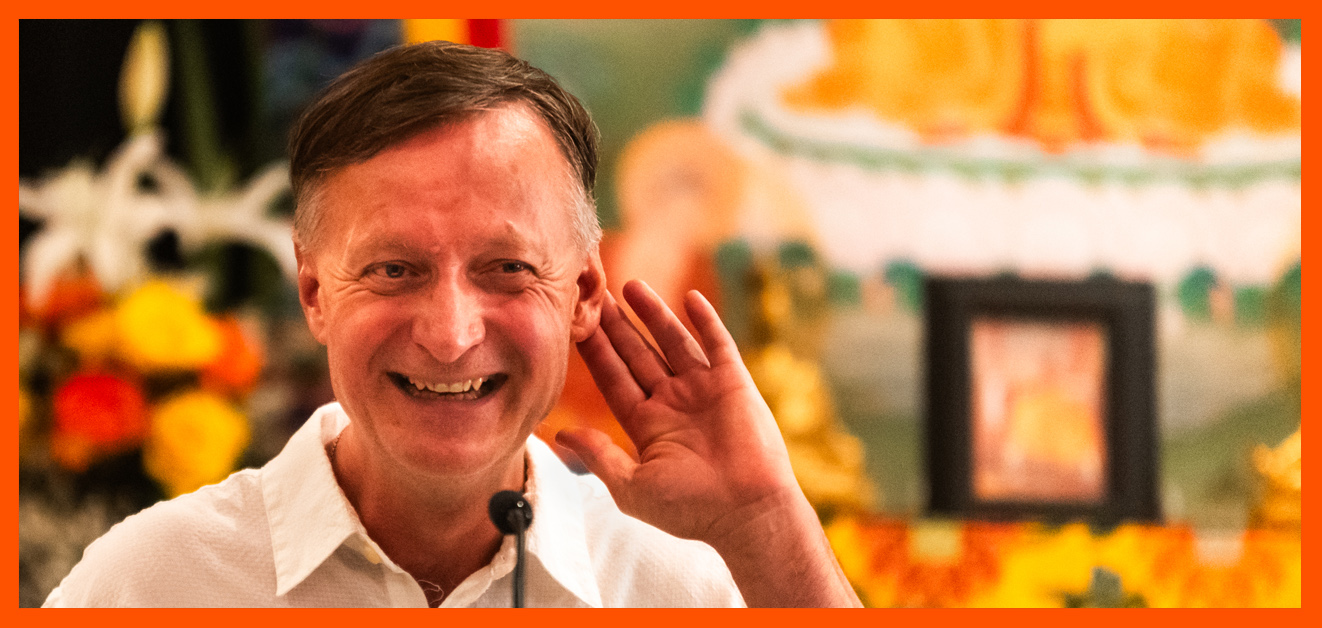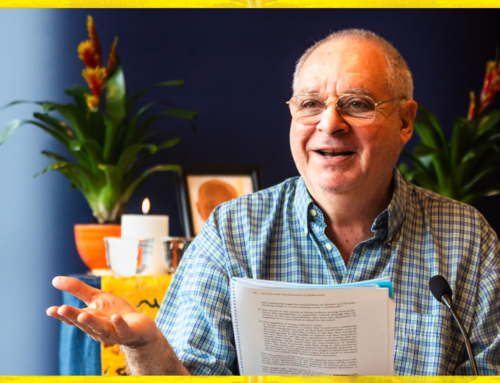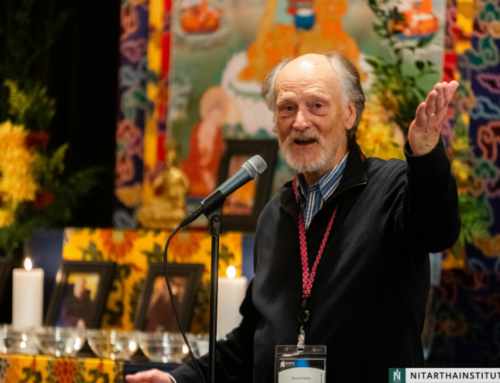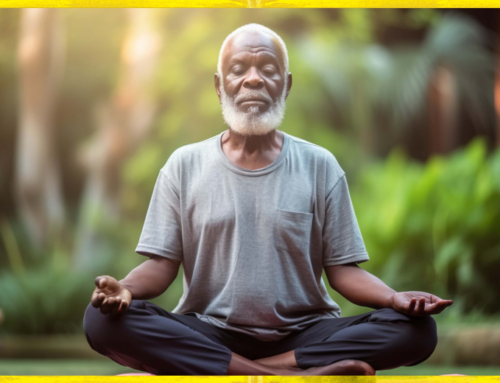How To Practice In This Time Of Strife – Part II
Part II :
The view of the dependent origination of the mutual dependence of the perceiver and the perceived, which is brought into life through the practice of mindfulness of breathing in such an immediate and compelling way, is furthermore expressed in the conduct of non-harming (ahimsā).
The conduct of non-harming is the main topic of this presentation here – How To Practice In This Time Of Strife. Another name for the conduct of non-harming is the practice of compassion. The mind of the conduct of non-harming is the mind imbued with compassion. Thus, non-harming is the conduct of the Buddha and his students, who are us.
Now, in Buddhism, the conduct of non-harming is not an expression or consequence of some religious axiom, which says that I will be a good person by not harming others and myself because this is required by the god, or the all-mighty. In Buddhism, the conduct of non-harming is not practiced because it is expected from a good person, or because that is how social harmony works in society.
The actual reason for practicing the conduct of non-harming is to live the view of dependent origination. That’s the ethics of a genuine Buddhist journey. I’ll repeat it again, the conduct of non-harming is the direct outcome of penetrating, understanding, experiencing, and realizing the view of dependent origination. This penetration, this understanding, experience or realization of dependent origination can be actualized through the practice of mindfulness of breathing, as I suggested above.
How is the view of dependent origination the non-theistic cause of the practice of the conduct of non-harming? That’s very easy, isn’t it? Through contemplating the view of dependent origination, we can see that the boundary between the friend and the enemy, the boundary between me and you really does not exist, other than in the imaginations of our conceptual mind. In such contemplation one can directly see that any distinction between the outer and the inner is only imagined. It does not exist in reality. The suffering of the world is not out there, it is arising as mind. Why? One is not without the other because this outer world is dependently arisen, together with the perceiver.
If you think about it, there is no suffering in the world without the one who experiences it and there is no experiencer without the suffering world out there either. And, on the very basic level, if I harm you, I’m also harming myself. If I harm myself, I’m also harming you. There is no winner in hitting and killing. There’s no winner because we are all in it together.
If the view of dependent origination is practiced through the mindfulness of breathing as was suggested above, the notion of us all being here together is not merely some theoretical postulation. At the time of strife like this today, I am suggesting for all of us practitioners to go back to the dharma of mindfulness of breathing. This is the best of all the dharmas. Mindfulness of breathing is the tathāgata-vihāra, that’s where the Buddha resides, that is his dwelling, his abode, within the perceiver and the perceived of the breathing process. From the Nikāyas:
“If anyone, bhikkhus, speaking rightly could say of anything: ‘It is a noble dwelling, a divine dwelling, the Tathāgata’s dwelling,’ it is of concentration by mindfulness of breathing that one could rightly say this.”
That’s where the actual Buddha is. And through breathing we can actualize the direct experience of the view of dependent origination. Then, through understanding dependent origination, we can exercise the conduct of non-harming.
This is the dharma of mindfulness of breathing: breathing the suffering in and breathing the suffering out. Breathing all the goodness in and breathing all the goodness out. Mindfulness of breathing is the dharma that has no flaw. It’s flawless. If you find a flaw with mindfulness of breathing then say what it is. It’s a flawless dharma. The dharma of dependent origination has no flaw. It’s pure, it’s flawless. If there is a flaw with it, say what it is.
The conduct of non-harming is the supreme conduct, which has no flaw. It’s completely pure. If you find any flaw with the conduct of non-harming, say what it is.
Since this view of dependent origination is flawless, and since this meditation of mindfulness of breathing is flawless, and since this conduct of non-harming is flawless; since this view, this meditation, and this conduct are flawless, and since you, Gautama, taught them fully, perfectly, and completely, then I take refuge in the Buddha, his dharma and his sangha. That’s the non-religious, genuine reason for taking refuge in the Three Jewels. Nāgārjuna prostrates to the Buddha in this way because he relinquished all views through the view of praītyasamutpāda, because he taught the genuine dharma of mindfulness of breathing and because he generated the great compassion through the conduct of non-harming. The closing verse of Madhyamakaśāstra 27.30 says:
“You have abandoned all views,
Taught the genuine dharma,
Generated the great compassion —
I prostrate to Gautama.”
And, in order to practice in this time of strife, we can assume a meditative posture with a straight spine and practice the technique of mindfulness of breathing, following the distance of the breath, appreciating the interdependence of the perceived and the perceiver, resting in non-duality of perceiver and perceived.
Within this meditative state we invite the thought of compassion, visualizing a specific image from the news, suffering people in the war zone, bringing them vividly, clearly into this non-dual space, without subject and object. This visualization is clearly explained by Patrul Rinpoche in The Words of my Perfect Teacher, in the section on the meditation on compassion, among the Four Immeasurables:
“Instead of thinking of that suffering person as someone else, imagine that it is you.”
To genuinely mentally engage in this way is possible only if the notion of me and the notion of the suffering person arise interdependently, not in separation. The instruction continues:
“Ask yourself what you would do in that situation. What now? There is nowhere to run. Nowhere to hide. No refuge and no-one to protect you. You have no means of escape. You cannot fly away. You have no strength, no army to defend you. Now, at this very moment, all the perceptions of this life are about to cease. You will even have to leave behind your own dear body that you have sustained with so much care, and set out for the next life. What anguish! Train your mind by taking the suffering of that condemned prisoner upon yourself.”
This narrative, this visualization, arises in the space of non-duality of mental engagement without the separation between the one who visualizes and the visualized thought. Practicing this way, we will relate to the suffering world in a more direct, immediate way: breathing out the suffering, breathing in the suffering, breathing out the luminous heart of the Tathāgata and breathing in the luminous heart of the Tathāgata.
And in this space, where the thought of compassion arises within the space of dependent origination, there is no true enemy and then there is no true friend. It all arises as the compassionate play of mind in the form of the interdependence of eighteen dhātus. Why is it a play of mind? Because appearances and thoughts never leave the mind, they never separate from the mind, they never fragment from the mind. Why is this play compassionate? Because compassion is the basic fabric of mind, the basic constituent of mind. This can be directly evidenced when we observe our mind when it is at rest. We can see that it is imbued with energy, with goodness, with light. That is the quality of our mind when it is in its natural state. It is the Buddha within, the luminous heart of the tathāgatagarbha.
At the end, we can let go of this contemplation and just be, just rest and be, without meditating on anything whatsoever, without analysis. Just rest and be, relaxed at ease.
That’s all I have to say about this topic of how to practice in this time of strife. As Dzogchen Ponlop Rinpoche said once: “The world is at war, but our minds are not at war, right?” Thank you.





